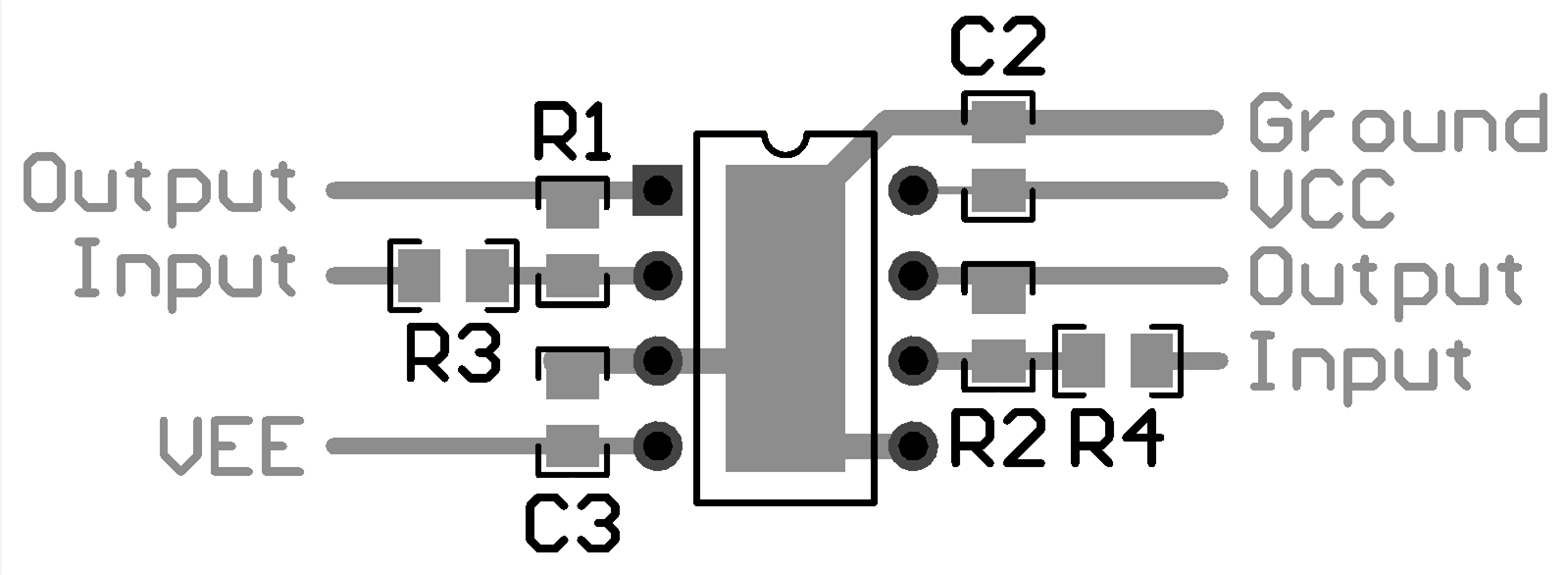SNOSBH7F April 1999 – September 2014 LF412-N
PRODUCTION DATA.
10 Layout
10.1 Layout Guidelines
As with most amplifiers, care should be taken with lead dress, component placement and supply decoupling in order to ensure stability. For example, resistors from the output to an input should be placed with the body close to the input to minimize “pick-up” and maximize the frequency of the feedback pole by minimizing the capacitance from the input to ground.
10.2 Layout Example
 Figure 31. LF412 Layout
Figure 31. LF412 Layout